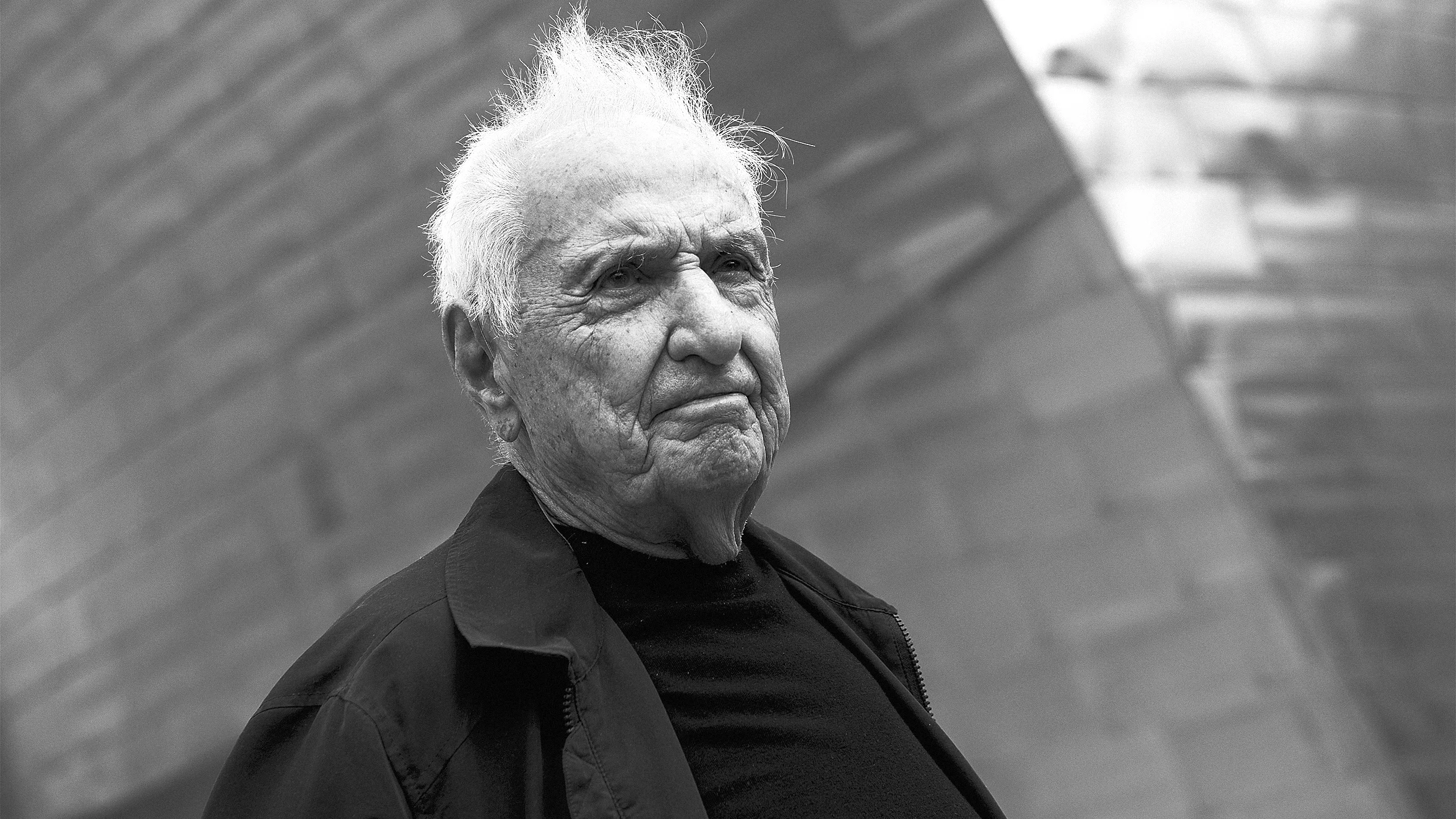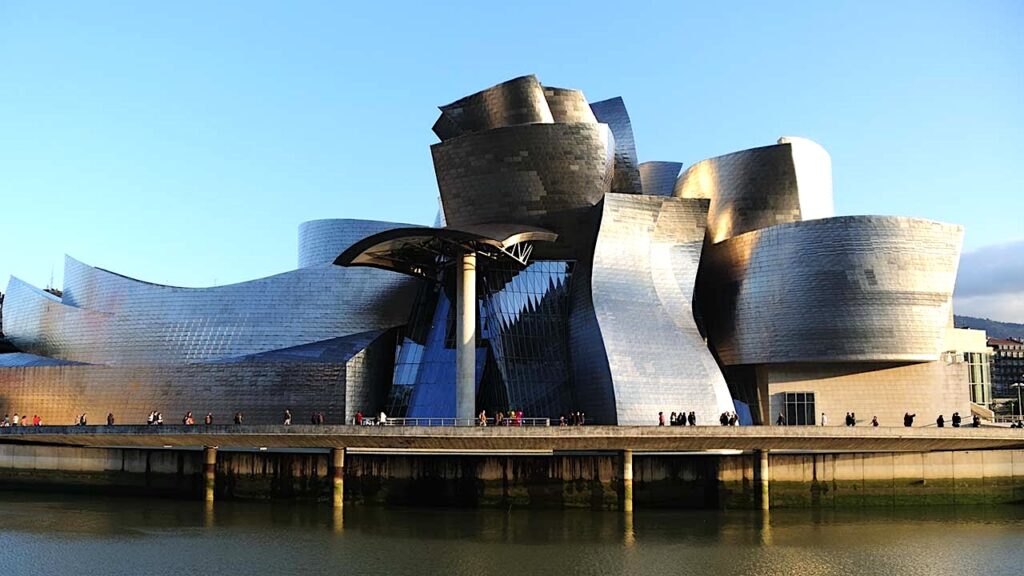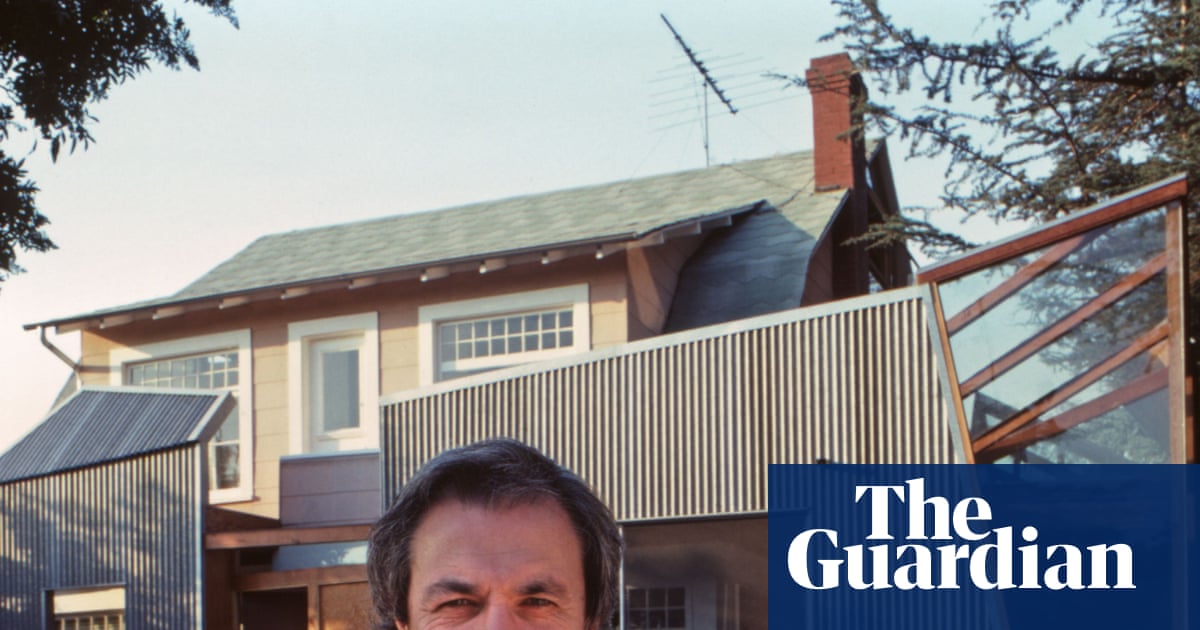#architecture
#architecture
[ follow ]
#frank-gehry #guggenheim-bilbao #interior-design #urban-regeneration #awards #obituary #hugh-wallace
fromArchitectural Digest
1 day agoArchitect to Architect: My Friend Frank Gehry
He often gave me excellent advice. When I was having a crisis with a collaborator on the Kauffman Center -specifically around the acoustics and engineering challenges of creating a truly in-the-round concert hall-he said to me, "You're working with the wrong person. You need to work with [acoustician Yasuhisa] Toyota." He was right. That advice opened doors and ultimately made it possible for me to realize the scheme I'd envisioned.
Design
Design
fromLondon Business News | Londonlovesbusiness.com
2 days agoWhere shopping meets adventure: A traveller's day out in Manchester's most iconic mall - London Business News | Londonlovesbusiness.com
The Trafford Centre combines palace-like classical architecture with diverse shopping, dining, and entertainment to create a memorable, family-friendly urban experience.
Design
fromIndependent
4 days agoMy favourite room: 'It's got its origins in lightweight aircraft design' - Garvan de Bruir on creating furniture, bags and his sustainable Aviator Haus
Garvan de Bruir designed and lives in a distinctive compact home extensively incorporating leather across fittings and furniture, showcasing his design range beyond leather bags.
fromVulture
5 days agoFrank Gehry, World-Famous Postmodern Architect, Dead at 96
Frank Gehry, the architect whose work was so identifiable that he guest starred on The Simpsons, is dead at 96. Meaghan Lloyd, chief of staff at Gehry Partners LLP, told the Associated Press that Gehry died in his Santa Monica home after a brief respiratory illness. Gehry won every major architecture prize there is, per the Associated Press, including the ultra-prestigious Pritzker Prize. His work was described as "refreshingly original and totally American" despite him being Canadian.
Design
fromArchDaily
6 days agoThe Architecture Agenda: Inside the Key Events of 2026
Architecture and design enter 2026 in a moment of renewed experimentation, urgent environmental reflection, and an expanded global dialogue on the built environment. As cities confront the pressures of climate adaptation, demographic shifts, and technological transformation, this year's international calendar offers a lens into how the discipline is responding, creatively, critically, and collectively. From long-standing biennials to newly established platforms, the events of 2026 spotlight architecture's evolving role as both a record of our changing world and a driver of more equitable, sustainable futures.
Design
US politics
fromWashingtonian - The website that Washington lives by.
6 days agoTrump's Name Is a Perfect Match for the Ridiculous US Institute of Peace Building - Washingtonian
The US Institute of Peace headquarters is a hulking, dove-roofed 'duck' that appears megalomaniacal, aesthetically silly, and architecturally closed off from the city.
fromArchDaily
1 week ago"Great Architecture Must Be Poetry:" Zhu Pei on Architecture as a Form of Art in Louisiana Channel Interview
With an artistic and exploratory approach, it investigates the relationship between the roots that anchor architecture in specific natural and cultural contexts and the innovation that drives architecture as a form of artistic revolution. In his interview with Louisiana Channel, Zhu Pei describes architecture as an artistic discipline that, like poetry, relies on openness, imagination, and the creation of new experiences.
Design
Design
fromdesignboom | architecture & design magazine
1 week agoglass curtain wall envelops richter gedeon's headquarters by ZDA in budapest
Richter Gedeon's Budapest headquarters integrates heritage, high-performance pharmaceutical identity, sustainable human-centered design, and flexible community spaces within a sculptural, precision-focused architecture.
fromArchitectural Digest
9 years agoArt Deco Architecture: Everything You Need to Know
Art Deco buildings are often visible from any angle. Instead of appearing two-dimensional-the way many buildings look when placed directly next to each other-art deco buildings consistently appear three-dimensional. "One way you do this is by building skyscrapers that tower over the neighbors, but they also did more than that." Robins says. "Architects would chamfer the corners or curve the corners, they'd use setbacks and other designs to give the sense of three dimensions."
Design
fromwww.theguardian.com
1 week agoRobert AM Stern, architect dubbed King of Central Park West', dies aged 86
Robert AM Stern, an architect who fashioned the New York City skyline with buildings that sought to invoke pre-war splendor but with modern luxury fit for billionaires and movie stars, has died at the age of 86. Dubbed The King of Central Park West by Vanity Fair, Stern was credited with designing 15 Central Park West that, in 2008, was credited as being the highest-priced new apartment building in the history of New York.
Real estate
fromArchDaily
2 weeks agoMuseum of the Amazon / Gua Arquitetura + be.bo. arquitetos
The Museum of the Amazons (MAZ), a cultural space dedicated to valuing science and technology in the region, opened to the public in Belém on October 4th. The museum is part of Porto Futuro II, which comprises a set of works carried out by the Government of Pará, left as a legacy from COP 30 to the capital of Pará.
Design
fromCN Traveller
2 weeks agoHow to spend a long weekend in Budapest
Spending a long weekend in Budapest is always a good idea. It's a city of striking silhouettes and quiet corners - the domed Parliament reflected in the Danube, bright roofs of multi-coloured tiles crowning churches and markets, and grand boulevards interspersed with hidden courtyards and tranquil garden squares. Trams slide along the waterfront, bridges frame long views, and the mix of neo-Gothic, Baroque and Art Nouveau architecture lends a sense of discovery to every stroll.
Travel
fromdesignboom | architecture & design magazine
2 weeks agogreen cork skin camouflages galeria gabinete's portuguese cultural center into its lush setting
In Penafiel, Portugal, Galeria Gabinete completes Ponto C - Cultura e Criatividade, a cultural building that reorganizes the city around it. Led by architect Helder de Carvalho, the project establishes a new southern entrance and redefines the relationship with the historic center. What had long been dismissed as 'the back' of the city now faces the Praça de S. Martinho square as a civic foreground, undoing the idea of Penafiel as 'a city split down the middle' and opening possibilities for more structured expansion.
Remodel
Design
fromYanko Design - Modern Industrial Design News
2 weeks agoZaha Hadid Architects' Symphony Tower Weaves Emirati Tradition into Dubai's Skyline - Yanko Design
Symphony Tower is a 42-story Dubai residential skyscraper with an illuminated lattice exoskeleton that fuses traditional Emirati textile patterns, shading, terraces, photovoltaics, and modular construction.
fromdesignboom | architecture & design magazine
2 weeks agoheatherwick studio plans birmingham stadium around twelve chimney-like towers
The design by Heatherwick Studio and MANICA Architecture orients the stadium in Birmingham around twelve chimney-like towers that rise from the ground plane and support the roof. Heatherwick Studio draws from Birmingham's history of brickmaking, using reclaimed bricks where possible to give these structural elements a layered, tactile presence. Their scale defines the outer form while shaping light, airflow, and movement inside the building.
Soccer (FIFA)
fromdesignboom | architecture & design magazine
3 weeks agoblock722 celebrates mid-century athens with warm timber lumen residences
Designed for studio founders Katja Margaritoglou and Sotiris Tsergas, the homes reflect the studio's ongoing explorations of craft and materiality. The residence occupies the top two levels of a five-unit building conceived and developed by Block722 with Thekla Construction. From the street, the structure reads as confident and geometric, balancing modern rigor with soft edges. Its volumes and timber detailing echo Athens' postwar optimism, recalling mid-century forms backdropped by native Mediterranean plantings.
Real estate
Design
fromdesignboom | architecture & design magazine
3 weeks agosnhetta plans dusseldorf opera house with cavernous, carved-out interiors
Snøhetta's Düsseldorf opera house arranges three trapezium volumes with tilted roofs and a porous ground-floor cavern to create a public cultural forum and urban integration.
Remodel
fromdesignboom | architecture & design magazine
3 weeks agobright-red outdoor theater restores community use to cairo park amid loss of green spaces
A ten-meter-tall, all-red outdoor theater and community arts space in Giza uses recycled Nile plastic and co-design to center culture, ecology, and collective agency.
fromBusiness Insider
3 weeks agoI've been to all 50 states. There's still just one city I love visiting most.
I have visited all 50 states, but when I think about the city that I find the most dynamic, New Orleans rises to the top. It's magical. I've been to New Orleans a few times - to see friends, immerse myself in its culture, and attend a conference. But ultimately, my love for the city rests on three pillars: its character, spirit, and cuisine.
Music
Photography
fromDesign You Trust - Design Daily Since 2007
3 weeks agoStunning Award-Winning Photos from the 2025 Epson International Pano Awards
The 2025 Epson International Pano Awards announced winners across Nature/Landscape and Built Environment/Architecture categories, plus special prizes recognizing panoramic photography from over 4,500 global entries.
Arts
fromArchDaily
4 weeks agoLimbo Museum Opens Its Debut Exhibition Within an Unfinished Brutalist Building in Ghana, West Africa
Limbo Museum converts an unfinished Brutalist estate in Ghana into a living laboratory for art, architecture, and design, embracing incompleteness as a curatorial principle.
Design
fromYanko Design - Modern Industrial Design News
4 weeks agoZHA's Dramatic Canyon-Cut Tower Tops Out In Shenzhen's Cultural District - Yanko Design
The Yidan Center is a rippled, canyon-like cultural headquarters in Shenzhen combining dramatic void-driven circulation, sun-controlling louvers, and ambitious sustainability goals.
fromThe Art Newspaper - International art news and events
1 month agoNew York museum championing Black artists gets fresh look
The Studio Museum in Harlem reopens after seven years on 15 November. Its new home was created from the ground up on the museum's former footprint at 144 West 125th Street. The first purpose-built space in its 57-year history, the 82,000-sq.-ft building was designed by Adjaye Associates with Cooper Robertson as executive architect-the two teams also collaborated on the recently opened new Princeton University Art Museum. The Studio Museum's $300m price tag-fully fundraised, almost a quarter from public sources-includes construction, operating costs during closure and a $50m endowment (the institution's first).
Renovation
Design
fromArchDaily
1 month agoThe Nordhavn Case: 10 Projects Transforming Copenhagen's Harbor into a Model of Urban Regeneration and Sustainability
Nordhavn repurposes Copenhagen's industrial harbor into a sustainable, mixed-use district of islands, canals, adapted docks, and innovative architecture.
Arts
fromOpen Culture
1 month agoDozens of M.C. Escher Prints Have Been Digitized & Put Online by the Boston Public Library
M.C. Escher created prints that visualize philosophical and scientific thought experiments through paradoxical, constructed environments, resisting mystical or drug-related interpretations.
fromYanko Design - Modern Industrial Design News
1 month ago3 Danish Firms Just Built The Modern Lighthouse-Inspired Office Every Architect Will Copy - Yanko Design
Copenhagen's skyline has a new star. The Tip of Nordø, a sleek 60-meter cylinder of glass and steel, now dominates the Nordhavn waterfront like a modern lighthouse. This isn't just another office building - it's the result of a dream team collaboration between Cobe, Vilhelm Lauritzen Architects, and Third Nature, three firms that know how to make waves in Danish architecture.
Design
fromArchDaily
1 month agoLanguage and Laughter Studio Preschool / O'Neill McVoy Architects
What you see is the result of a collaborative journey between three fields: education, architecture, and fabrication. The educational perspective guided us in designing a school that responds to the needs of children in a world increasingly dominated by digital technology, fostering instead a connection to nature. The architects shaped forms, spaces, and light that make every living being-children, plants, and animals-feel recognized and alive.
Education
fromCurbed
1 month agoYou Should Really See the Lightbulbs at Sotheby's Breuer Building
When the Breuer Building on 75th and Madison reopens on Saturday in its new life as an auction house for Sotheby's, return visitors will notice that the lobby is much as they left it. The room is a rare interior landmark, a designation that encompasses what seemed like furniture: slabs of seating and tables that are cemented in. But Sotheby's still managed to make some tweaks.
Renovation
Arts
fromTime Out New York
1 month agoFirst look: The Studio Museum in Harlem is set to reopen its home for Black art after a seven-year closure
The Studio Museum in Harlem reopens November 15 in its first purpose-built, expanded 82,000-square-foot building, reinforcing Harlem's and Black art's significance.
Travel
fromTravel + Leisure
1 month agoThis Laid-back Australian City Is Quickly Becoming the Country's Coolest Coastal Destination
Brisbane has transformed into a confident, creative subtropical capital driven by bold architecture, thriving hospitality, and cultural momentum ahead of the 2032 Olympics.
fromPsychology Today
1 month agoWhy Some People Always Feel Angry and Unfairly Treated
Claire is 35, a highly accomplished architect known for her precision, discipline, persistence, determination, and clarity of thought. She has never been one for shortcuts. Through school and university, she was the kind of student who turned in clean drafts weeks before deadlines, earning her reputation as the straight-A girl who never left loose ends. Her teachers valued her efficiency, her peers respected her output, and her supervisors quickly learned she could be trusted with complex projects.
Psychology
fromCurbed
1 month agoThe Rooftop Chalet on West 78th Street
Staring across the Hudson, the young architect imagined a helicopter lifting a trailer from a dinky New Jersey development and placing it on top of a building somewhere in Manhattan. "It was a fantasy," he tells me, "but it was kind of a crystallization of the way I wanted to live in New York." It was the late 1980s. Tesoro was more than a decade out of architecture school and had been running his own firm for a few years.
New York City
fromYanko Design - Modern Industrial Design News
1 month agoRotterdam Strikes A High Note As Construction Begins On MVRDV's Saxophone-Inspired Towers - Yanko Design
The Sax consists of two interconnected towers that truly live up to their musical namesake. The taller "Havana" tower soars 180 meters across 55 stories, while its companion "Philadelphia" reaches 82 meters with 26 floors. The towers are dramatically connected by a golden skybridge spanning six stories, creating what MVRDV describes as a "saxophone-like silhouette" that will serve as a beacon on Rotterdam's evolving waterfront.
Design
fromArchitectural Digest
1 month agoRobert Stilin on Publishing a Design Book
AD100 designer Robert Stilin, founder of the eponymous New York-based practice has done it twice, with his first monograph, Robert Stilin: Interiors (2019) and now Robert Stilin: New Work (published this fall). For our latest AD PRO Playbook, the designer reveals what it really costs to create a design book, how to connect with the right publisher, and the impact his books have had on his business.
Design
fromdesignboom | architecture & design magazine
1 month agoDS+R completes undulating glass facade for cartier flagship in miami design district
The newly renovated Cartier flagship in Miami's Design District stands at 147 NE 39th Street, its new facade conceived by Diller Scofidio and Renfro, and comprehensive renovation and interior design by Laura Gonzales. The building's undulating glass carries a rhythm that catches the changing light and suggests a sense of motion. Across the curved surface, a delicate pattern has been translated from a 1909 Cartier brooch. It appears and disappears with each shift in sun or shadow, softening the boundary between interior and exterior.
Remodel
[ Load more ]























